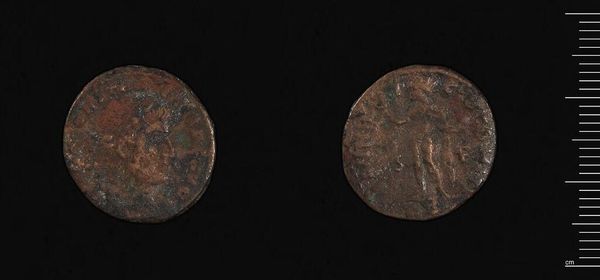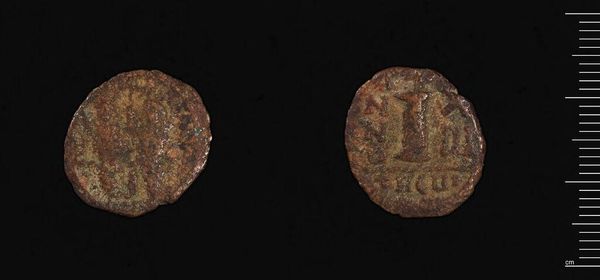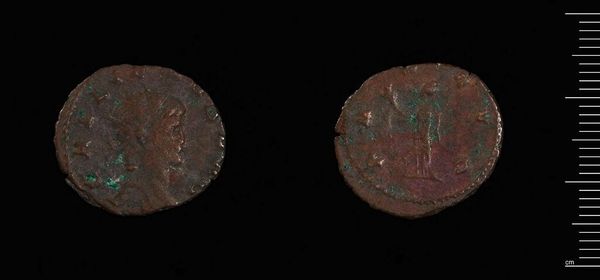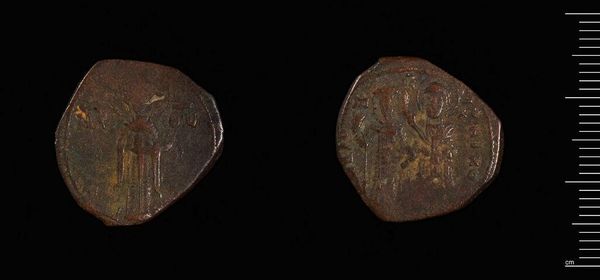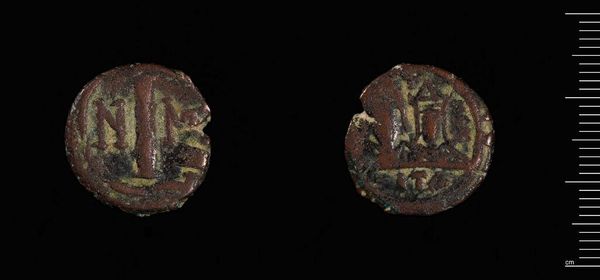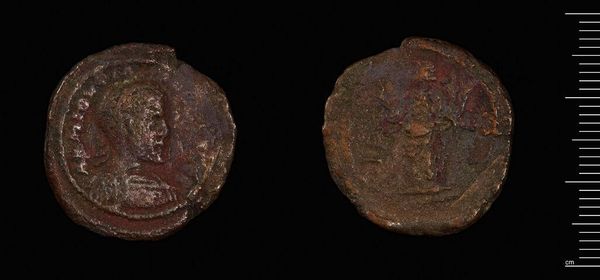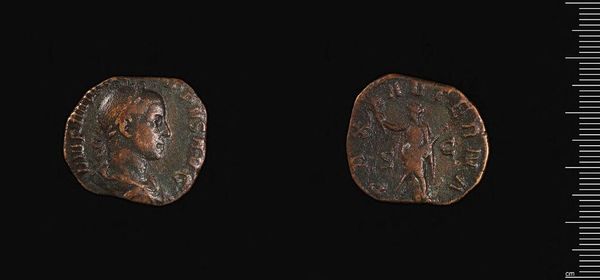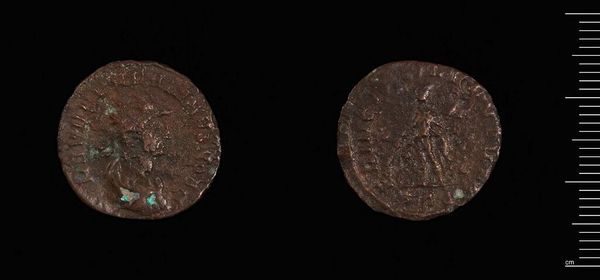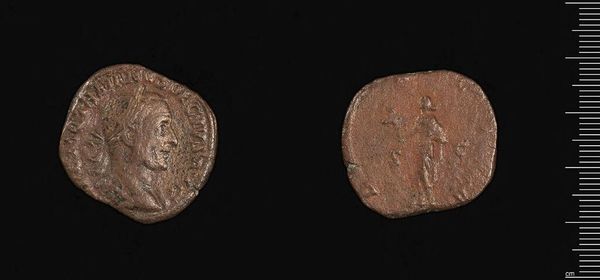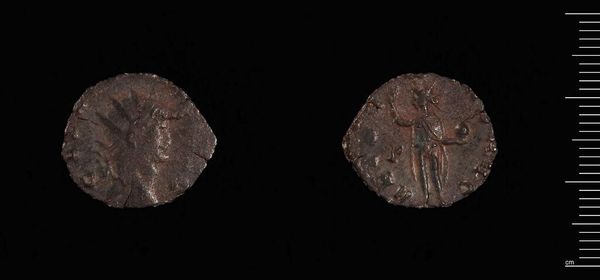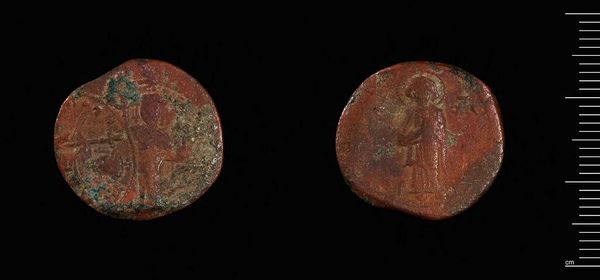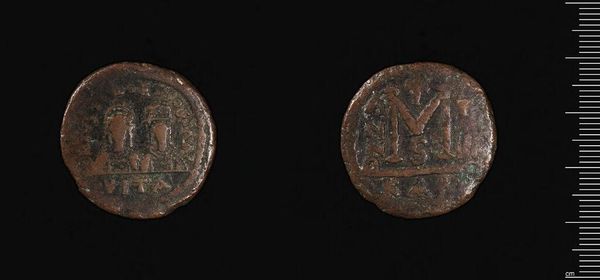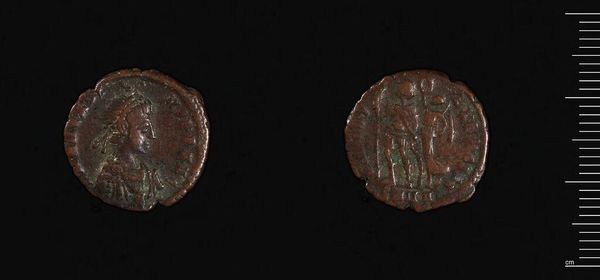
Dimensions: 2.91 g
Copyright: CC0 1.0
Editor: Here we have the Tetarteron of Alexios III, a rather worn coin at the Harvard Art Museums. It is fascinating to imagine what it was like when it was in use! What can you tell me about the world this object inhabited? Curator: As a piece of currency, the Tetarteron embodies power. It showcases the Byzantine Emperor's authority to mint and distribute coinage, reflecting a centralized economic and political system. Consider the imagery: who is depicted and what does their portrayal suggest about the values the ruler wished to project? Editor: It’s hard to make out specific details, but I see figures on both sides. It also appears to be made from a base metal, rather than gold. Curator: Exactly! The debasement of the coinage reflects the political and economic instability of the late Byzantine period. Its circulation would have impacted not just the elite, but the daily lives of ordinary people. How does that change your perspective? Editor: I hadn’t considered that it reflected a declining empire. Now it seems less like a symbol of power, and more like evidence of decay. Curator: Precisely. The coin is not just an object, but a document reflecting a complex web of social, political, and economic forces. Editor: That gives me a lot to think about. Thanks!
Comments
No comments
Be the first to comment and join the conversation on the ultimate creative platform.
